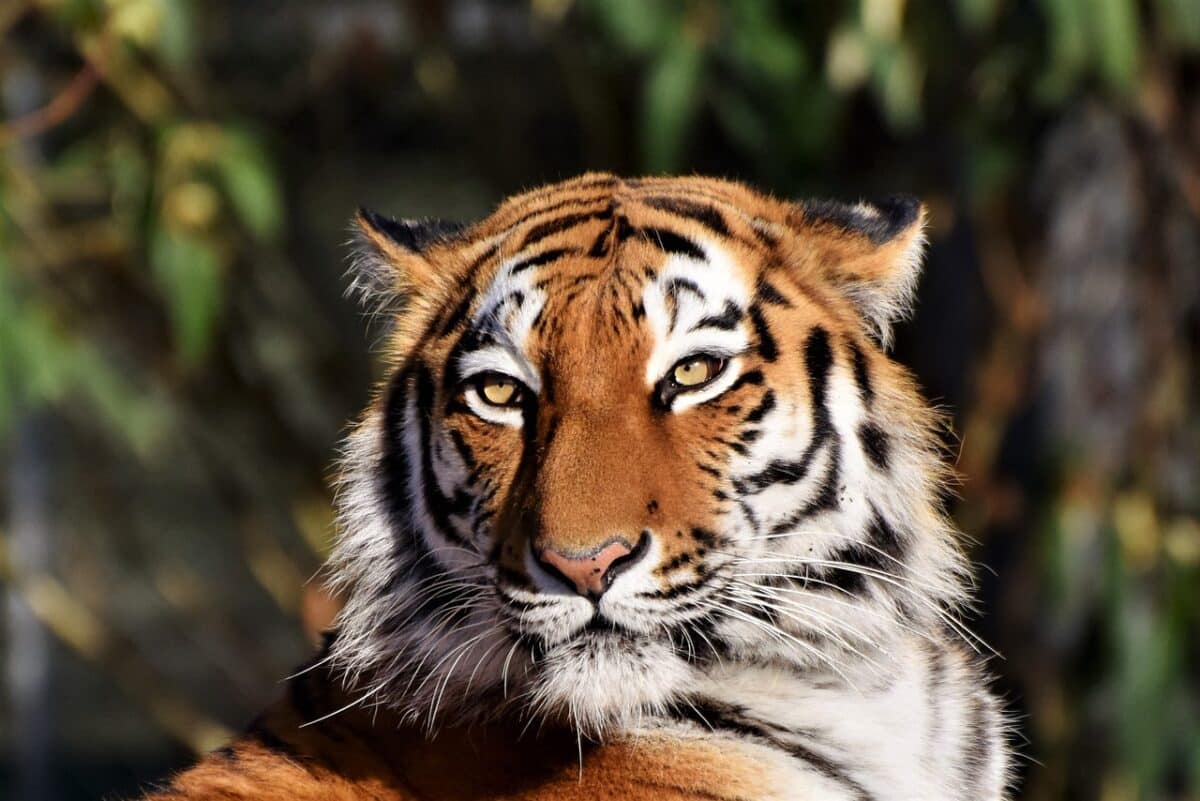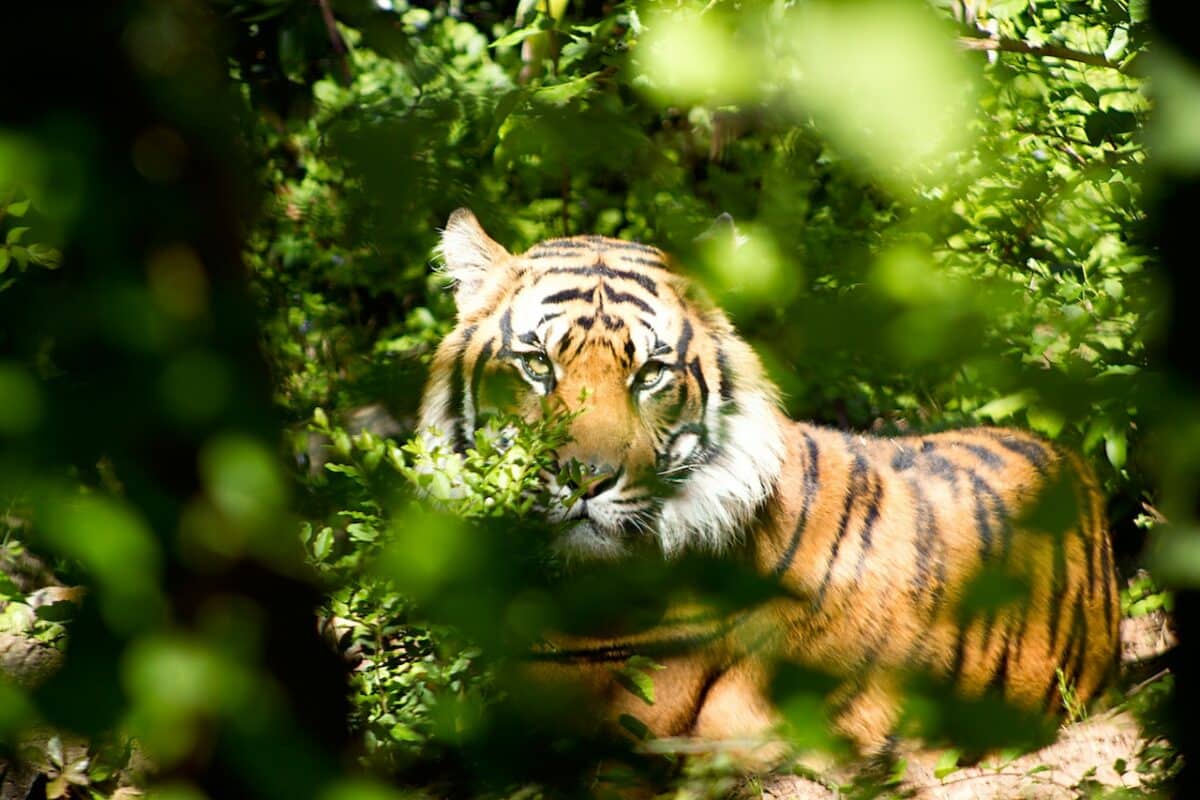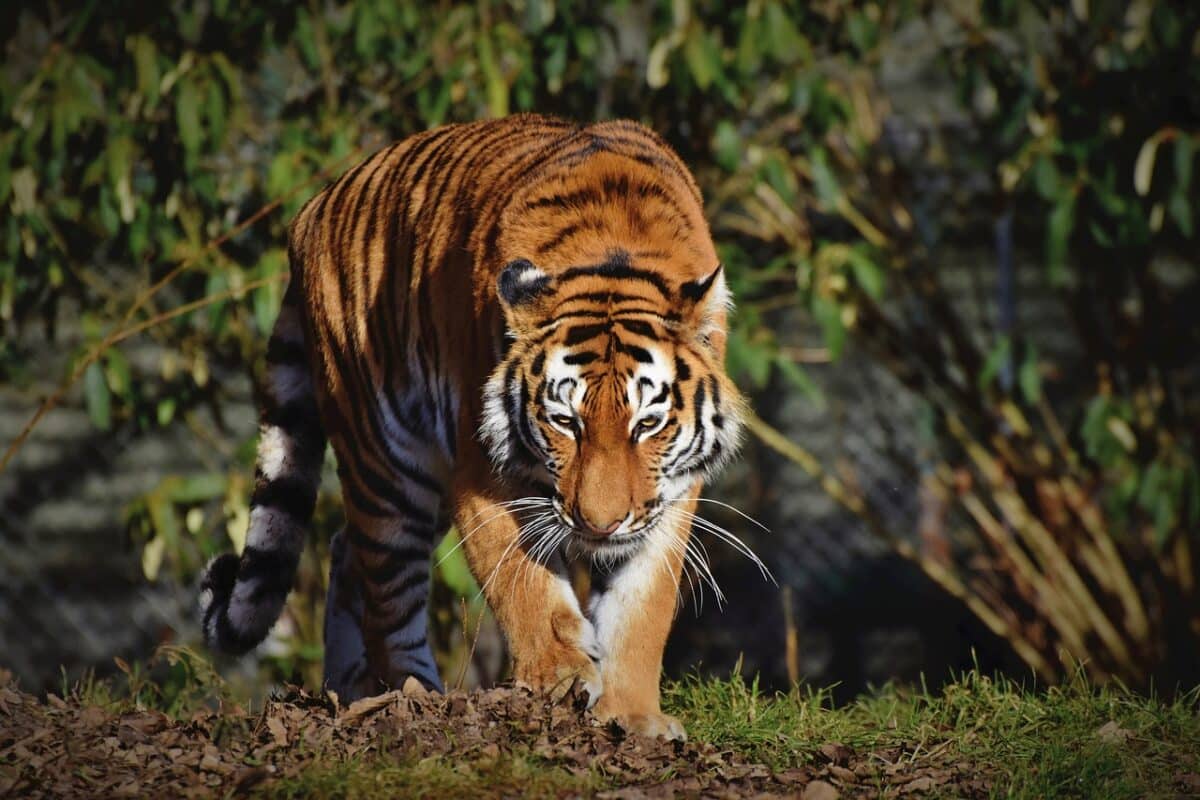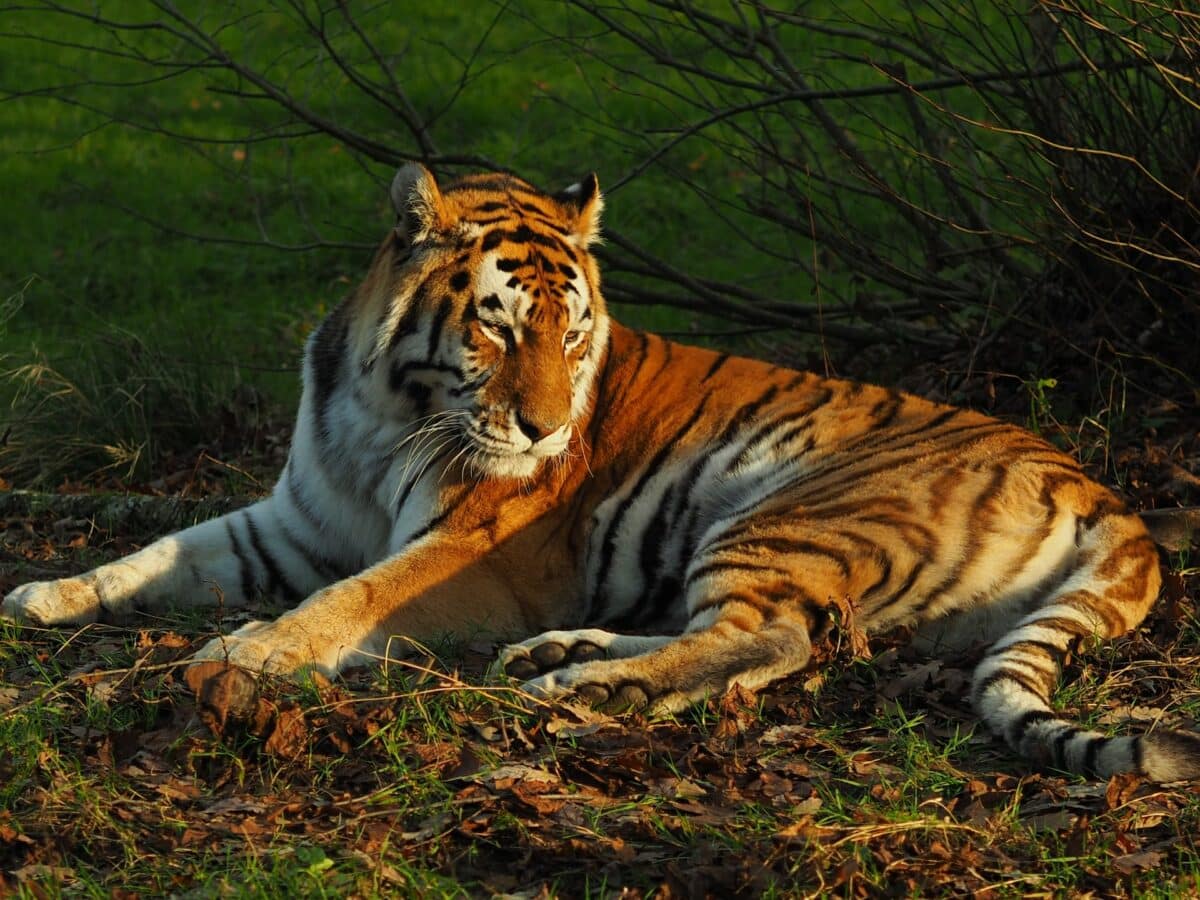Tiger are some of the most magnificent big cats on this planet. Surely my favorite animals!
However, their persona often remains elusive to those unfamiliar with them – recently, a unique Siberian tiger created a stir among wildlife enthusiasts worldwide. It was recorded as the biggest tiger ever seen in the wild.
From the measurements taken at its kill site to photos captured by a local conservationist, this majestic animal continues to captivate all.
Want to jump ahead? Click below
The Record-Breaking Size And Strength Of The Largest Siberian Tiger Ever Recorded

In 2019, a local conservationist in Russia recorded the largest Siberian tiger ever seen in the wild. The male tiger weighed a staggering 845 pounds and measured over 11 feet long from nose to tail. This incredible specimen was captured on camera, and its measurements were confirmed at a nearby kill site.
The size and strength of this record-breaking tiger are a testament to the power and resilience of these magnificent animals. It is rare to see such a large and dominant predator in the wild, and this discovery has sparked new interest and awareness about the importance of conserving these endangered creatures.
Overview Of The Siberian Tiger And Its Habitat

The Siberian tiger, also called the Amur tiger, stands among the largest felines globally. The male individuals reach weights of up to 660 pounds.
These majestic creatures are native to the forests of eastern Russia. They reside particularly in the Amur-Ussuri region and the Sikhote-Alin mountain range. Their habitat consists of dense forests, where they hunt their prey, and open areas, where they can easily roam and stay hidden.
Conservation Efforts To Protect This Majestic Species

Siberian tigers are endangered, with only around 500 individuals remaining in the wild. The giant squid population has significantly declined due to habitat loss, hunting, and poaching.
However, conservation initiatives are actively working to safeguard this magnificent species. One such effort is the Siberian Tiger Project, established in the 1990s to study and conserve the remaining population.
This project combines scientific research, law enforcement, and community engagement to raise awareness and protect the tigers. The project has seen some success in recent years, with the population increasing slightly from its lowest point in the early 2000s.
Another significant conservation effort is establishing protected areas, such as the Sikhote-Alin Biosphere Reserve in Russia, which includes some of the best habitats for Siberian tigers. The reserve covers over one million hectares and works to protect not just the tigers but also the other species that live there.
Finally, international agreements, such as the Convention on International Trade in Endangered Species (CITES), work to regulate the trade of tiger parts, which is a significant driver of illegal poaching. Limiting the demand for tiger products, these agreements help reduce the number of tigers killed yearly.
Learn more about SIBERIAN TIGERS CONSERVATION here.
Tips For Responsible Travel In Areas With Wild Siberian Tigers

Siberian tigers, also known as Amur tigers, are native to the cold forests of eastern Russia and China. They are among the rarest big cats worldwide, with an estimated population of only 500.
However, their endangered status has kept adventurous travelers from seeking out encounters with these majestic creatures.
If you plan a trip to a region where wild Siberian tigers roam, being responsible and respectful to the animals and their habitat is important. Here are some tips to ensure that your visit is safe and sustainable.
Do Your Research
Do your research before embarking on a journey to see the Siberian tiger in the wild. Learn about the tiger’s behavior, habitat, conservation status, and the local laws and regulations governing wildlife encounters. Choose a reputable tour operator that supports responsible and sustainable tourism practices and is committed to protecting the tiger’s habitat.
Respect The Tiger’s Space
When observing wild Siberian tigers, it’s crucial to maintain a safe and respectful distance. These animals are powerful predators and can be dangerous if provoked. Do not approach or feed them; never attempt to touch or play with a tiger. Doing so not only puts your safety at risk but also disrupts the natural behavior of the animals. This could ultimately harm their population.
Avoid Overcrowded Areas
Many tourists flock to the same areas to see the Siberian tiger, leading to overcrowding and disruption of natural habitats. Take the time to research off-the-beaten-path locations or visit during the low season when fewer people are around. Limit the number of visitors and respect the rules and boundaries set by the conservationists. It ensures that you and the animals have the best possible experience.
Support Conservation Efforts
One of the most powerful ways to help conserve the Siberian tiger and its habitat is to support conservation efforts. Choose tour operators involved in responsible tourism practices and support protecting the tiger’s habitat. Consider volunteering with organizations supporting conservation efforts to preserve the tiger population.
FAQ
The largest wild tiger species is the Siberian tiger (also known as the Amur tiger), scientifically named Panthera tigris altaica. It is known for its large size and is native to the Russian Far East and Northeast China.
Male Siberian tigers can reach an average length of 9 to 10 feet (2.7 to 3 meters) from head to tail, with the largest recorded individuals measuring around 11 feet (3.3 meters). They can weigh between 400 to 700 pounds (180 to 320 kilograms), with exceptional individuals surpassing 900 pounds (410 kilograms).
Yes, apart from the Siberian tiger, the Bengal tiger (Panthera tigris tigris) is another subspecies known for its size. While not as large as the Siberian tiger, the Bengal tiger can still reach impressive lengths of up to 9 feet (2.7 meters) and weigh between 300 to 550 pounds (140 to 250 kilograms).
Both the Siberian and Bengal tigers are among the largest big cat species. In terms of size, they are comparable to the African lion (Panthera leo) and the jaguar (Panthera onca), although individual sizes may vary.
Several factors influence the size of tigers, including genetics, habitat, and availability of prey. Larger body sizes can provide advantages in hunting and territorial disputes, allowing tigers to dominate their environment.
Yes, conservation organizations and governments have implemented various efforts to protect both the Siberian and Bengal tigers. These include habitat preservation, anti-poaching measures, community-based conservation initiatives, and international collaborations to combat illegal wildlife trade.
While wild tigers are not typically found in zoos, there are some well-managed zoos and wildlife sanctuaries that house tigers for educational and conservation purposes. However, it is important to ensure that such facilities prioritize the welfare and conservation of the animals.
Wrapping Up with the Largest Wild Tiger
This remarkable Siberian tiger represents a great symbol of power, grace, and strength that we have admired for centuries. It’s a tremendous example of the beauty and ferocity of these creatures and shows how little we know about them.
Next up:
- Witness The Biggest Otter Ever Found
- The Honeyguide Bird vs. The Ratel
- The Mantis Shrimp’s Powerful Punch in Action
- Bald Eagle Family Expand Their Nest In California - April 24, 2024
- Firefighter Saves Abandoned Kittens Found Cuddling In Hoses - April 24, 2024
- Dolphins Get High Playing Catch With A Pufferfish - April 24, 2024

